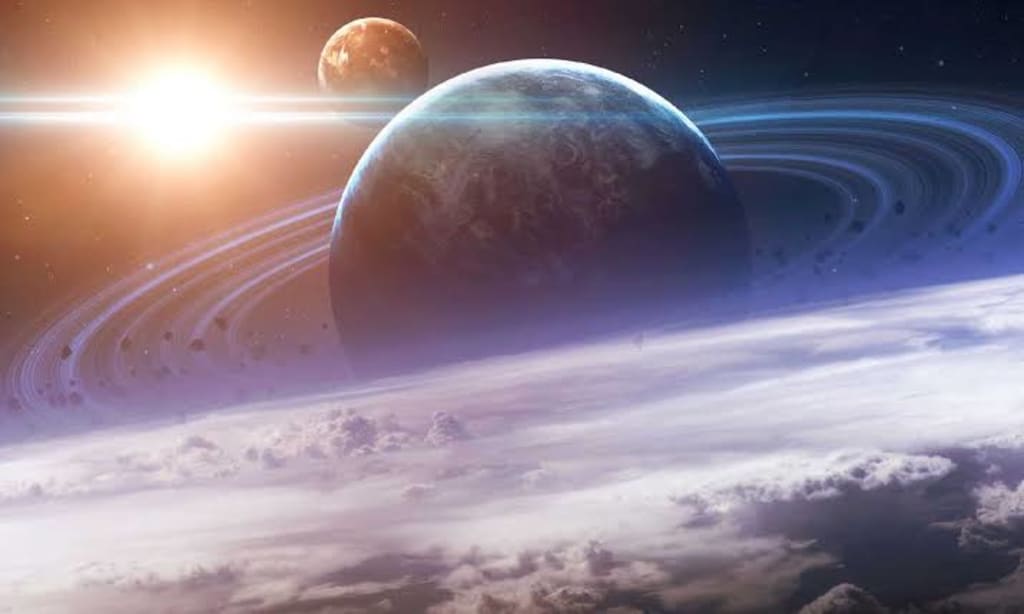Discovering Hestia: A New Planet that Sparks the Imagination
Exploring the Wonders and Possibilities of a Promising World

The search for new planets has always been an exciting endeavor for scientists and space enthusiasts alike. With every discovery, we expand our understanding of the universe and the possibilities it holds. Recently, a new planet has been discovered that has captured the attention of astronomers and captured our imaginations: Hestia.
Hestia is a terrestrial planet, meaning it is similar in size and composition to Earth. It is located in the habitable zone of its star, which means that it is at a distance from its star where the temperature is just right for liquid water to exist on its surface. This is an important factor in the search for habitable planets because water is essential for life as we know it.
The planet was discovered by a team of astronomers using the Transiting Exoplanet Survey Satellite (TESS) which is designed to search for exoplanets, or planets outside of our solar system, by looking for dips in a star's brightness as a planet passes in front of it. Hestia was found orbiting a small, cool star about 70 light-years away from Earth.
One of the most intriguing things about Hestia is that it appears to have a very stable climate. This is due to the fact that it is tidally locked with its star, meaning that one side of the planet always faces the star while the other side is in perpetual darkness. This creates a stark temperature difference between the two sides of the planet, but it also means that there are no weather patterns like storms or winds that can cause extreme changes in temperature.
The stable climate of Hestia makes it an ideal candidate for further study and exploration. Scientists are already excited about the possibility of finding life on this promising planet. While it is still too early to say for sure whether Hestia has life, the conditions on the planet are certainly favorable for it.
In addition to the potential for life, Hestia also has a number of other interesting features that make it a fascinating subject for study. For example, the planet appears
Scientists are already planning to use the James Webb Space Telescope, set to launch in late 2021, to study Hestia in more detail. This powerful new telescope will be able to detect the chemical makeup of the planet's atmosphere, giving us a better understanding of whether it could support life. In addition, ground-based telescopes will be used to study the planet's surface features and potential for geological activity.
One of the most exciting possibilities for Hestia is the potential for human exploration. While it is still too early to say whether the planet is habitable, its stable climate and Earth-like features make it an attractive option for future colonization. In fact, some scientists have already begun to speculate about the possibility of terraforming Hestia, or modifying its environment to make it more hospitable to human life.
Of course, the idea of terraforming another planet is still very much in the realm of science fiction. There are a number of ethical and practical challenges to consider, including the potential impact on any existing life forms that may exist on Hestia. However, the discovery of a planet like Hestia is a reminder that the possibilities for space exploration and colonization are vast and exciting.
In addition to the scientific and practical implications of the discovery of Hestia, there is also the simple wonder and awe that comes with discovering a new world. The exploration of space is one of the greatest human achievements, and every new planet we discover is a reminder of our capacity for curiosity, discovery, and exploration.
Perhaps one of the most exciting things about the discovery of Hestia is the potential it holds for inspiring a new generation of scientists and space enthusiasts. The search for new planets and the exploration of the cosmos captures our imaginations and ignites our sense of wonder and curiosity. Who knows what other amazing discoveries await us in the vast expanse of space?
In conclusion, the discovery of Hestia is a thrilling new chapter in the ongoing search for exoplanets and the exploration of the universe. With its Earth-like features, potential for life, and unique characteristics, it is a fascinating subject for study and exploration. Whether we are able to colonize the planet, terraform it, or simply continue to study it from afar, the discovery of Hestia is a reminder of the infinite possibilities that await us in the depths of space.
About the Creator
Cho Writes
So here am i to inspired you all with the power of my words as a content writer and also blog article. Writer iam excited to feel you all good with my power of words.






Comments
There are no comments for this story
Be the first to respond and start the conversation.